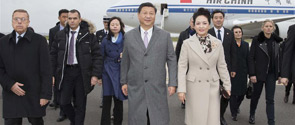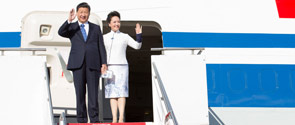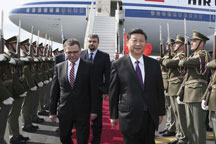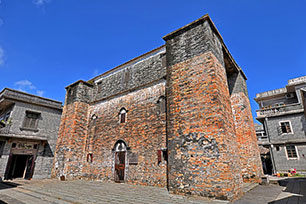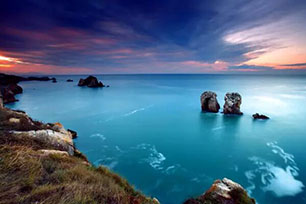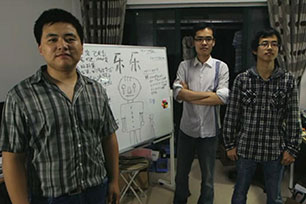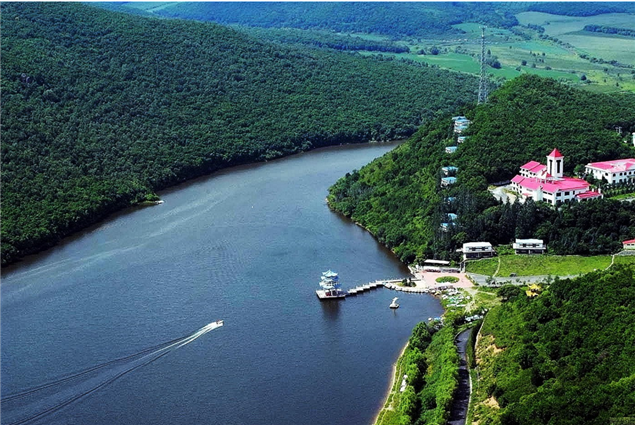Preserving the murals through digitization
Ancient murals in Dunhuang Mogao Grottoes are in danger of disintegrating. Preservationists are desperately trying to digitize the important relics before they are gone forever.
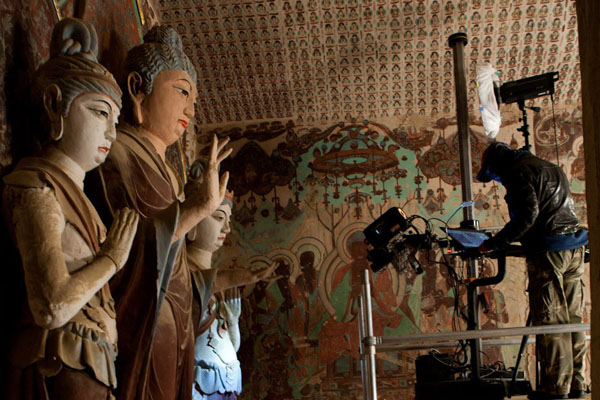
A photographer zooms in on a statue in a cave of Mogao
Grottoes.Provided to China Daily
The precious artworks in Dunhuang Mogao Grottoes are now at risk from arid weather, natural deterioration and the impact of tourism. Among the 735 caves in Dunhuang, 492 contain murals and colored statues. Sadly, half of the murals are at risk of being lost.
Fan Jinshi, president of Dunhuang Academy, and her colleagues believe the future preservation of the murals lies in digitization.
The foremost purpose of digitization is to build a digital archive," says Sun Zhijun, deputy director of Dunhuang Academy's Digital Center. "So people can still appreciate the murals' beauty and study their value hundreds of years later."
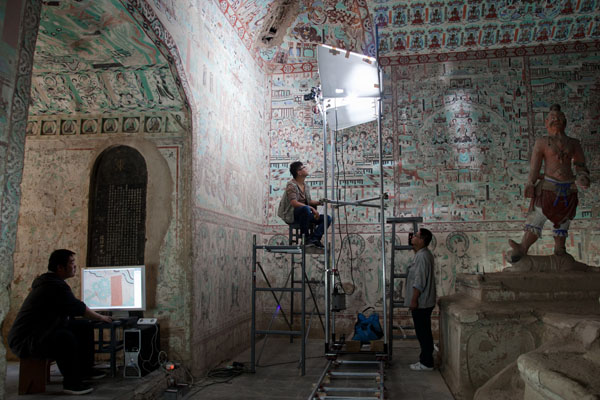
A photography team captures images of ancient murals in a cave of
Dunhuang Mogao Grottoes, in Gansu province. Provided to China Daily
The ambitious project started in 1999, when the Andrew W. Mellon Foundation funded a joint project between Dunhuang Academy and Northwestern University of the United States. Archivists digitized 22 caves in five years, using rails like train tracks to stabilize cameras moving over the uneven cave surfaces — hardware the American experts brought from Hollywood to capture the murals.
At first the team used traditional cameras, sent the film to the US and scanned the photos into a computer. Digital cameras were adopted in 2000, but the photos' resolution could only reach 75 DPI (dots per inch, or per 2.54 cm, a measure of printing resolution).
Thanks to the continuous upgrading of digital cameras, now the photos are of 300 DPI, good enough for archiving and printing.
A photography team usually includes a photographer, three assistants and a quality supervisor who ensures the right focus and size. They divide the murals into small pieces, each 31 by 47 cm and take photos of them. According to Sun, one square meter of mural needs about 60-70 photos.
Once the photos have been taken, there is a long, drawn-out process to piece them together using a computer. Sun says 688-square-meter Cave 61 took two and a half months to photograph and about seven months to piece together on the computer.
The cooperation with Northwestern University ended in 2003. Yet the academy has not stopped improving the technology and digitization process. The tracks used to only be available in one size, now the digital center develops tracks of three different widths to suit different caves. The cameras used to only work with regular light, but now only cold light can be allowed to protect the murals.
The conservation work was greatly enhanced in 2011 when Microsoft Research Asia donated a video camera with a resolution of 1.3 billion pixels, to the academy. The two institutions started to develop the camera in 2010.
The academy divides the caves into four categories according to cultural importance. Sun's team expects to digitize all the 147 A-list caves by 2015.
The digitization is a time-consuming project, but it is urgent, too.






 Newsletter
Newsletter
 CCTV Live
CCTV Live Video
Video Programs
Programs Schedule
Schedule





